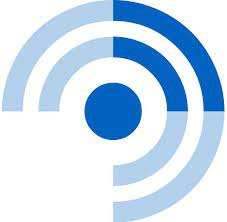
In 2024 alone, Rwanda recorded over 417,000 births, an average of approximately 1,142 births per day, underscoring the growing demand for educational infrastructure.
Each year, Rwandan schools enroll roughly 500,000 new students, a figure that includes both children starting school on time and those who enroll late. For instance, the number of students enrolled in pre-primary schools increased from 540,998 in the 2022/23 academic year to 605,229 in 2023/24.
Primary school enrollment increased from over 2.8 million to more than 3 million in 2023/24.
The proportion of children aged 6 to 11 entering primary school rose to 148.2% in 2023/24, up from 141% the previous year.
The five-year Education Sector Strategic Plan (ESSP 2024-2029) outlines the need to build more than 37,463 classrooms dedicated to pre-primary and primary education.
For pre-primary schools, 18,721 classrooms will be constructed, with each costing over Frw16.5 million. The total investment for this will exceed Frw310.48 billion. These classrooms will have a capacity to accommodate 724,648 students, ensuring class sizes do not exceed 30 students by 2029.
In primary schools, 18,742 classrooms will be built to achieve an average of 46 students per class. Additionally, 4,090 classrooms will be constructed in underserved areas to reduce long travel distances for some students.
Each primary school classroom is projected to cost Frw16.5 million , with the total investment reaching Frw378.66 billion.
Older schools will undergo renovations involving 12,402 classrooms, with an estimated cost of Frw 202.51 billion between 2024 and 2029.
In secondary schools, 409 science laboratories will be built, each equipped to teach three different science subjects. Construction will cost approximately Frw 53 billion.
Teaching materials worth Frw51 billion
Planned investments also include teaching materials from pre-primary to higher levels.
In pre-primary schools, books, toys, and other learning aids valued at Frw2.2 billion will be supplied over five years.
In primary schools, over 4.46 million textbooks will be distributed, each costing Frw5,000, with a total estimated cost of Frw 22 billion. Secondary school students will receive 3.8 million textbooks costing Frw7,000 each.
Over the next five years, about 3,794 teachers will be hired for pre-primary and primary schools, with salaries amounting to Frw 55 million. The total salary expenditure for all teachers over five years is projected to exceed Frw1.58 trillion. Secondary school teachers' salaries will total about Frw 621.5 billion.
The school feeding program for pre-primary and primary students is budgeted at Frw 97.5 billion, with an allocation of Frw 26,325 per student.
Secondary schools will receive over Frw 18 billion for feeding, while technical and vocational schools will be allocated Frw 3.55 billion.
On another front, Frw 20.6 billion will be spent on providing internet access to schools, maintaining equipment, and paying monthly subscriptions.
The document forecasts that by the 2024/25 academic year, 63% of schools will have internet access, increasing to 85% by 2028/29.
Electricity access from the national grid in schools is expected to reach 85% by 2024/25 and 95% within five years.

IGIHE
